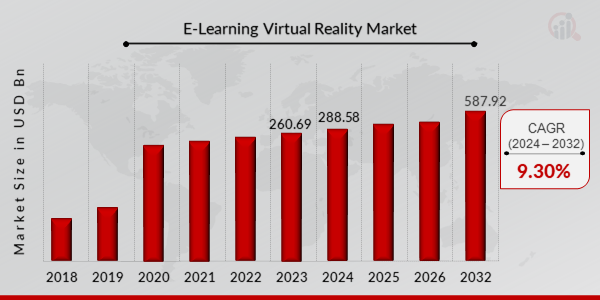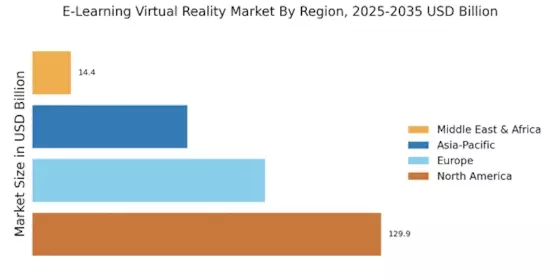Rising Demand for Remote Learning Solutions
The E-Learning Virtual Reality Market is experiencing a notable surge in demand for remote learning solutions. As educational institutions and organizations seek to provide flexible learning options, virtual reality offers an immersive experience that transcends geographical barriers. This demand is reflected in the increasing investments in VR technologies, which are projected to reach approximately 12 billion USD by 2026. The ability to engage learners in a virtual environment enhances retention and understanding, making it a preferred choice for many educators. Furthermore, the shift towards online education has prompted a reevaluation of traditional teaching methods, leading to a greater emphasis on interactive and experiential learning. Consequently, the E-Learning Virtual Reality Market is poised for substantial growth as it aligns with the evolving needs of learners and educators alike.
Growing Acceptance of Gamification in Education
Gamification is becoming an integral component of the E-Learning Virtual Reality Market, as it enhances learner engagement and motivation. By incorporating game-like elements into educational content, learners are more likely to participate actively and retain information. This trend is supported by research indicating that gamified learning experiences can lead to a 60% increase in engagement levels. As educational institutions and organizations adopt gamification strategies, the demand for VR solutions that facilitate these experiences is expected to rise. The potential for gamification to create immersive and interactive learning environments positions the E-Learning Virtual Reality Market as a key player in the future of education. This shift towards gamified learning experiences may redefine traditional educational paradigms, making learning more enjoyable and effective.
Increased Focus on Skill Development and Training
The E-Learning Virtual Reality Market is witnessing an increased focus on skill development and training across various sectors. Organizations are recognizing the importance of equipping employees with practical skills in a safe and controlled environment. Virtual reality simulations provide realistic scenarios that enhance learning outcomes, particularly in fields such as healthcare, engineering, and aviation. The market for VR training solutions is projected to grow, with estimates indicating a potential value of 3 billion USD by 2025. This emphasis on experiential learning not only improves knowledge retention but also prepares individuals for real-world challenges. As industries continue to prioritize workforce development, the E-Learning Virtual Reality Market is likely to expand in response to these evolving training needs.
Expansion of Virtual Reality Hardware and Software Solutions
The E-Learning Virtual Reality Market is benefiting from the expansion of VR hardware and software solutions. As technology advances, the availability of affordable and high-quality VR devices is increasing, making it easier for educational institutions to adopt these tools. The market for VR hardware is projected to grow, with estimates suggesting a value of 15 billion USD by 2025. Additionally, the development of user-friendly software platforms that support VR content creation is enhancing accessibility for educators. This proliferation of VR solutions is likely to drive adoption rates, as more institutions recognize the potential of virtual reality to enhance learning outcomes. Consequently, the E-Learning Virtual Reality Market is positioned for robust growth as it capitalizes on these technological advancements.
Integration of Artificial Intelligence in Learning Platforms
The integration of artificial intelligence (AI) into the E-Learning Virtual Reality Market is transforming the educational landscape. AI technologies enable personalized learning experiences by adapting content to meet individual learner needs. This customization enhances engagement and effectiveness, as learners can progress at their own pace. The market for AI in education is expected to grow significantly, with estimates suggesting a value of over 6 billion USD by 2027. By leveraging AI, educational institutions can analyze learner data to identify strengths and weaknesses, allowing for targeted interventions. This synergy between AI and virtual reality not only enriches the learning experience but also positions the E-Learning Virtual Reality Market as a leader in innovative educational solutions.


















Leave a Comment